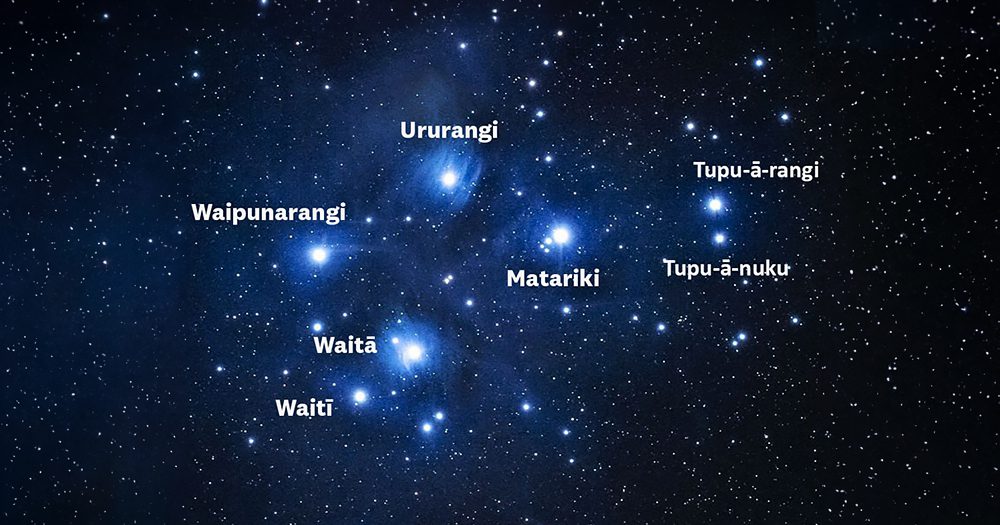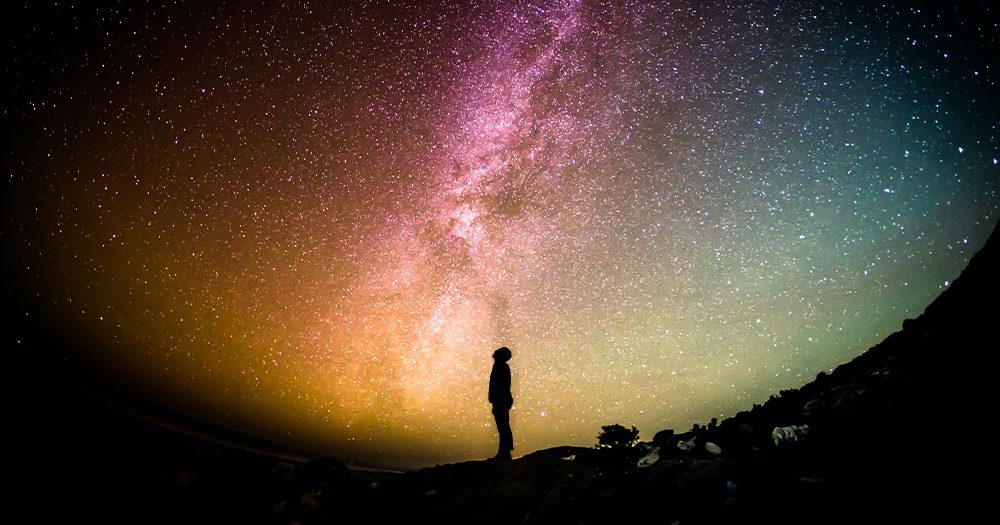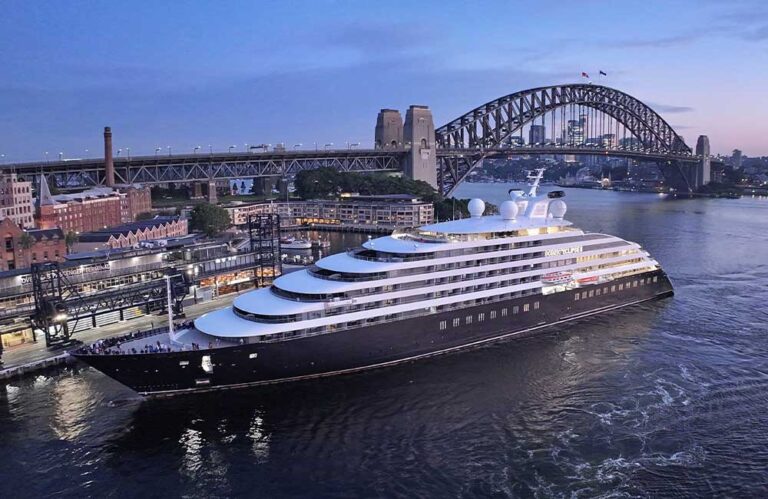This Friday, July 14, 2023, sees the start of Matariki, Māori New Year celebrations. Defined as ‘The gatherer of people’, Matariki is a special time that embodies the rich cultural heritage of Aotearoa, New Zealand’s Indigenous Māori community and is an opportunity to reconnect with nature, families and, most importantly, ourselves.
As the cold bite of winter stretches across Aotearoa from late May to early July, a small cluster of twinkling stars known as the Pleiades, or Matariki, make their way back into the pre-dawn skies, signalling the advent of the Māori New Year.
For Māori people, it’s a profoundly significant time that binds the past, present and future through an age-old tradition of reflection, remembrance and renewal.
Matariki translates to ‘the eyes of god’, emanating from the Māori legend wherein the god of the winds, Tawhirimatea, became so grieved upon his parents’ separation that he tore out his eyes and flung them into the heavens. A powerful tale of grief and loss that reflects Matariki’s deeply ingrained symbolism of remembrance.
At the heart of Matariki public holiday celebrations, Mātauranga Māori (ancestral knowledge and wisdom) acknowledges a shared heritage and an aspiration for unity. Specifically, it’s a time for;
- Remembrance – Honouring those we have lost since the last rising of Matariki
- Celebrating the present – Gathering together to give thanks for what we have
- Looking to the future – Looking forward to the promise of a new year
More than folklore, today it represents environmental wisdom coded into cultural practice, reminding us of the intimate bond between humanity and nature that is often forgotten in our modern, digitised lives.
According to one Māori myth, the cluster represents a whaea or mother – Matariki – and her six daughters Tupuānuku, Tupuārangi, Waipunarangi, Waitī, Waitā and Ururangi.
The star cluster is well known worldwide and can be seen around the globe just before dawn at different times of the year. It is one of the brightest clusters in the sky and contains hundreds of member stars.
In English, Matariki is called by its ancient Greek name, Pleiades or the Seven Sisters. In Hawaiian, it is Makali’i, ‘eyes of royalty’; in Japan, it is Subaru – the same name as the car brand, with the constellation even illustrated in the brand’s badge.
How is Matariki celebrated today in Aotearoa, New Zealand?

While the dates vary according to tribes and geography, Friday, June 24 2022, was the first-ever nationwide public holiday to celebrate Matariki in New Zealand.
This year, the theme for Matariki is Matariki kāinga hokia, or Matariki calls you home and will see Matariki celebrations begin on Friday, July 14, not just within the Māori community but nationwide across New Zealand.
Matariki is about reconnecting with your home and whānau (family). People across Aotearoa will come together to remember their ancestors, share (kai) food, sing songs, tell stories and play music.
There are many ways for all of us to acknowledge the Māori New Year and observe the rising of Matariki, including;
- Taking time to remember loved ones who are no longer with you
- Giving thanks for the year that has passed
- Enjoying a Matariki feast together
- Planning for the next year
- Spending time with family and friends
- Writing down your wishes for the year
- Planning to grow a garden
Auckland Airport will celebrate Matariki on July 14 with dedicated PA announcements throughout the international and domestic terminals, greeting and farewelling an estimated 52,000 pairs of taringa (ears) in te reo Māori and explaining the significance of Matariki.
Auckland Airport Chief Executive Carrie Hurihanganui said Auckland Airport has a unique opportunity to educate people about Matariki traditions as they arrive in Tāmaki Makaurau Auckland.
“The first thing travellers will hear when they land on Kiwi soil and disembark the plane will be te reo Māori, and meaningful messages of Matariki, over our PA system, voiced by two school children and Auckland Airport team members who speak te reo Māori.
“Matariki is an important time for many of our Auckland Airport employees, and we want to share this with our travellers,” said Hurihanganui.
Earlier this week in Sydney, New Zealand Trade and Enterprise (Te Taurapa Tūhono), the New Zealand Consul-General and Tourism New Zealand held a special Matariki gathering at The Museum of Contemporary Art.

The momentous evening, held looking out over Sydney Harbour and the clear night sky, welcomed two hundred tourism and trade dignitaries and acknowledged the strong connections forged between New Zealand and Australia’s indigenous peoples.
The gathering, which included Māori cultural storytelling and dance as well as a Matariki song sung with gusto by the entire New Zealand Trade and Enterprise and Tourism New Zealand team, celebrated New Zealand’s close bonds with Australia, including the trans-Tasman alliance’s 40th Anniversary of closer economic relations.

A few of the lucky team from Karryon, including myself, were honoured to be invited to the event to join in the celebrations and learn more about the wonder and symbolism behind Matariki.
How to spot the Matariki stars

The stars are among the closest star clusters to Earth and are easily spotted by the naked eye. The best time to view the Matariki cluster is early morning, just before dawn. To find them, look to the northeast horizon before sunrise.
Then, search for the distinct line of stars that forms Tautoru, or Orion’s belt. Keep moving your gaze north of these three stars until you see a cluster of tiny stars roughly as wide as Tautoru is long. These are the Matariki stars.
Perhaps Matariki’s most beautiful aspect is its universality. While deeply rooted in Māori tradition, its themes of reflection, renewal, and connection resonate with all people, regardless of their cultural backgrounds.
Matariki gently reminds us of our collective responsibilities towards one another and the world we inhabit. It teaches us that while the world continues to change, our need for connection and renewal remains constant.
It reminds us of our capacity to rebuild and grow, just like the new year’s crops sprouting from the remnants of the old.
To everyone celebrating Matariki, all of us at Karryon wish you a time of joyful connection, thoughtful reflection, and hopeful renewal.
Mānawatia a Matariki!
For more information on Matariki, head to www.newzealand.com/int/matariki
For more New Zealand trade information, check out: Top 6 takeaways from Tourism New Zealand’s If You Seek famil or In season: upgrade your winter sales with Tourism New Zealand







